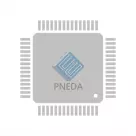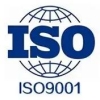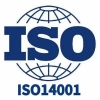Three trends affecting the future development of embedded processing technology

From a technical perspective, embedded systems will enable greater energy efficiency, thereby helping to conserve energy and enable more environmentally sustainable electronics. They will allow for more immersive interactions with humans and integration into the surrounding environment, such as more advanced autonomous robots to perform tasks and improve convenience. Such systems will be able to collect, analyse and respond to increasing amounts of data. Just as important, evolving technologies will become more accessible to more people, thus fully enjoying the benefits of technological progress.
For that future to happen, embedded processors need to evolve: they need to consume less power as they become smarter. It also requires affordable, more integrated components, and intuitive embedded software and tool support. All lines of embedded processing products share three trends (which are important features) :
1. Integrate more induction functions
There is a growing need to collect more data from everything around people and find innovative ways to use it.
In smart cities, for example, energy management systems can use data to monitor and control energy use in buildings, which can help reduce energy waste and reduce usage costs. Public safety systems can add smart features to detect and respond to emergencies and keep cities safe. For smart homes, an ecosystem of connected devices can reduce energy consumption and improve comfort and security for residents. Coupled with the need to upgrade grid infrastructure with more sustainable and renewable energy sources, people are only beginning to understand and appreciate the value of embedded intelligence for processing real-time data.
Energy management and infrastructure are also among the many applications and possibilities that are rapidly evolving to improve the quality and convenience of our lives, thanks to the increased sensing and processing capabilities of our everyday electronics.
The ability to integrate inductive and embedded intelligence into these systems was at the forefront of our consideration when developing our new family of microcontrollers. We aim to provide designers with a way to enhance the induction capabilities of systems and integrate more analog capabilities to simplify the development of induction circuits within systems without the need for additional components. An example of this integration advantage is the ability of the MSPM0 MCU to detect smoke faster and at a smaller profile size in a coreless smoke detector.
2. Implement AI in every embedded system
Whether it's smart security cameras that monitor homes and offices in real time, or autonomous robots that revolutionize modern factory assembly lines, making every system smart has become the norm. As the need for automation grows in all fields, especially in intelligent automation, design engineers are adding more features and capabilities to systems that can handle ever-increasing amounts of data, make informed decisions, and respond quickly.
Edge intelligence will become the core of intelligent automation system. This means that the data is calculated near the data acquisition sensor, allowing for safer, faster, and more reliable processing.
For example, suppose cameras throughout the plant constantly monitor equipment to detect and predict mechanical failures. Sending this data to the cloud outside the local network for processing and analysis, and then waiting for a decision to stop the assembly line, can affect the quality and throughput of the assembly line, while increasing the overall cost. By implementing edge intelligence, the assembly process can be stopped instantly if needed.
Previously, cost and power constraints limited how much edge intelligence designers could achieve. In developing the AM6xA family of Vision processors, we aimed to help address this challenge by providing efficient and cost-effective processing options supported by a common development environment.
These processors are suitable for embedded visual applications, such as equipping automated stores with smart cameras that can identify what consumers have purchased, creating a grab-and-go shopping experience.
3. Ease of use helps design get to market faster
As customers are challenged to bring their new products and innovations to market as quickly as possible, the need to promote the development of embedded systems becomes more urgent. Our customers need to create differentiated features quickly and reliably, and be able to respond flexibly to changing market conditions and customer preferences.
The embedded processing product family and its supporting ecosystem must be easy to design while providing strong enough support to help customers meet all of their embedded needs, speed product to market, and give designers more time to innovate. Therefore, I strongly recommend that companies use industry-wide open source software, community development platforms, and a unified software development environment. These resources enable our clients to draw on the knowledge and experience of experts in the field, enabling them to design more efficiently and bring products to market with incredible speed. Through our innovations, engineers can more easily implement systems that are intelligent, which will increase adoption rates and significantly increase our value to customers.
您可能感興趣的產品
 |
AMI-M12K-3-6-B | LINE FILTER 250VAC 3A CHASS MNT | 3114 More on Order |
 |
AMI-M12B-1-12-B | LINE FILTER 250VAC 12A CHASS MNT | 7362 More on Order |
 |
AMI-23B-20-6 | LINE FILTER 250VAC 20A CHASS MNT | 7200 More on Order |
 |
AMI-M11O-6-30-B | LINE FILTER 250VAC 6A CHASS MNT | 7326 More on Order |
 |
AMI-M11H-6-30-A | LINE FILTER 250VAC 30A CHASS MNT | 5112 More on Order |
 |
AMI-29B-6-3 | LINE FILTER 110/250VAC 6A CHAS | 3150 More on Order |
 |
AMI-M12R-1-10-B-1 | LINE FILTER 250VAC 1A CHASS MNT | 6480 More on Order |
 |
AMI-M12R-3-1-B-1 | LINE FILTER 250VAC 3A CHASS MNT | 7254 More on Order |
 |
AMI-21B-12-3 | LINE FILTER 250VAC 13A CHASS MNT | 3726 More on Order |
 |
AMI-M11K-7M-3-B-1 | LINE FILTER 250VAC 7A CHASS MNT | 8514 More on Order |
 |
AMI-M11J-3-3-B-2 | LINE FILTER 250VAC 3A CHASS MNT | 5346 More on Order |
 |
AMI-26-20-1 | LINE FILTER 250VAC 20A CHASS MNT | 4932 More on Order |
 |
AMI-22-30-6 | LINE FILTER 250VAC 30A CHASS MNT | 7434 More on Order |
 |
AMI-28-10-3 | LINE FILTER 110/250VAC 10A CHASS | 6102 More on Order |
 |
AMI-29A-16-1 | LINE FILTER 110/250VAC 16A CHASS | 6156 More on Order |
 |
AMI-29A-12-1 | LINE FILTER 110/250VAC 12A CHASS | 4338 More on Order |
 |
AMI-M11P-6-30-B | LINE FILTER 250VAC 30A CHASS MNT | 8748 More on Order |
 |
AMI-26-12-1 | LINE FILTER 250VAC 12A CHASS MNT | 8586 More on Order |
 |
AMI-28-3-1 | LINE FILTER 110/250VAC 3A CHAS | 2718 More on Order |
 |
AMI-M11R-7M-6-B-2 | LINE FILTER 250VAC 6A CHASS MNT | 6930 More on Order |
 |
AMI-23-8-1 | LINE FILTER 250VAC 8A CHASS MNT | 7596 More on Order |
 |
AMI-M11R-7-3-B-2 | LINE FILTER 250VAC 3A CHASS MNT | 4500 More on Order |
 |
AMI-M11A-3-1-B | LINE FILTER 250VAC 1A CHASS MNT | 3402 More on Order |
 |
AMI-21-3-1 | LINE FILTER 250VAC 3A CHASS MNT | 2286 More on Order |









